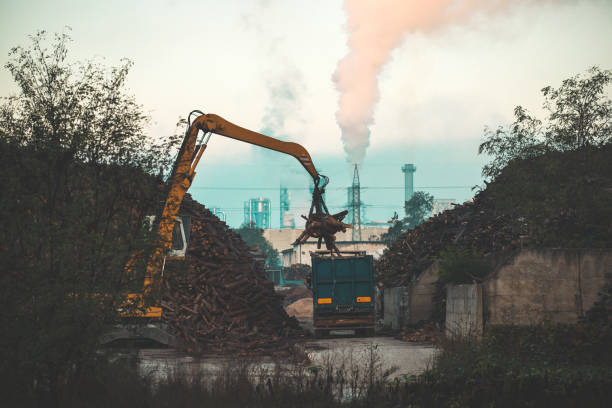As the world grapples with the challenges of climate change and energy security, the focus on renewable energy sources has never been greater. Among these, biomass pelletization stands out as a promising technology with significant potential.
Biomass, a renewable raw material, is increasingly being recognized for its potential to supplement or even replace fossil fuels in energy production. The benefits of biomass are manifold. It offers CO2-neutral emissions, contributing to the reduction of greenhouse gases. Its low NOx and SO2 emissions make it an environmentally friendly option. Moreover, favorable environmental policies and the autonomy of biomass production contribute to its viability as a secure energy supply.
Biomass pellets, commonly known as white pellets, are gaining traction as a bioenergy source in power plants. These pellets are produced from organic materials such as wood, agricultural residues, or energy crops. On the other hand, pyrolysis pellets, also known as black pellets, are produced through the thermal decomposition of biomass in the absence of oxygen. While black pellets hold a promising future, their widespread deployment is still in the nascent stages.
The process of biomass pelletization involves the use of various raw materials and additives. Extensive research is being conducted at laboratory, pilot, and industrial scales to optimize this process and enhance the quality of the pellets. The quality of the pellets is governed by specific standards, which take into account factors such as their calorific value, moisture content, ash content, and mechanical durability.
The economic aspects of biomass pelletization are also significant. The costs associated with the process, including the procurement of raw materials, the operation of pelletizing machines, and the transportation of pellets, are key considerations in the commercial viability of biomass pelletization.
The market dynamics for biomass pellets are evolving rapidly. There are meaningful trade flows across regions, driven by factors such as the availability of raw materials, the demand for renewable energy, and policy incentives. The large-scale combustion and co-combustion of biomass pellets in power plants have provided valuable insights into the practical aspects of using biomass pellets for energy production.
In conclusion, biomass pelletization is a promising technology that can play a crucial role in the renewable power generation scenarios of the future. However, it also presents challenges that need to be addressed. These include the need for technological advancements to improve the efficiency of pelletization, the development of sustainable supply chains for raw materials, and the establishment of supportive policy frameworks. With continued research and development, biomass pelletization has the potential to become a cornerstone of the world’s renewable energy landscape.